
In the days of analogue telephone communication, the most common type of cable that was used for connectivity was the unshielded twisted pair (UTP). Since it did not have a physical shield to block any interference, the amount of interference was a bit high. However, it was not too noisy and was good enough to transmit voice. But as the days passed and the number of people using telephones increased, the need for an automated telephone exchange increased too. It was in January 1958 that G. Goertzel published a paper called 'An Algorithm for the Evaluation of Finite Trigonometric Series, in the American Mathematical Monthly. This became the basis of dual tone multiple frequency (DTMF) signalling. It allowed us to encode numeric values as superpositions of two co-prime sine waves in such a way that they became noiseresistant.
On November 18, 1963, Bell Systems introduced phones with buttons instead of rotary dials. DTMF assigned a special tone to each button pressed on the telephone device. As a number was dialled, each button that was pressed gave a standard audio signal. The telephone exchange could decode these signals as DTMF to find out what number the user had typed in.
Binary was defined by 'on' and 'off' or '1' and '0'. DTMF technology worked by having the handset generate tones at specific frequencies and playing them over the phone line when a button was pressed on the keypad. It could be treated like a device to switch up to eight appliances. Equipment at the other end of the phone line listened to the specific sounds and decoded them into commands.
Diese Geschichte stammt aus der January 2023-Ausgabe von Electronics For You.
Starten Sie Ihre 7-tägige kostenlose Testversion von Magzter GOLD, um auf Tausende kuratierte Premium-Storys sowie über 8.000 Zeitschriften und Zeitungen zuzugreifen.
Bereits Abonnent ? Anmelden
Diese Geschichte stammt aus der January 2023-Ausgabe von Electronics For You.
Starten Sie Ihre 7-tägige kostenlose Testversion von Magzter GOLD, um auf Tausende kuratierte Premium-Storys sowie über 8.000 Zeitschriften und Zeitungen zuzugreifen.
Bereits Abonnent? Anmelden

ESP32-Powered AUDIO-VISUAL SIREN
This sound alternator is designed to simulate the effects of a police siren, combining sound and light to create a dynamic audio-visual experience.
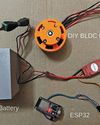
BLDC MOTOR With Web-Based Speed Control Using ESP32
Integrating wireless control into brushless direct current (BLDC) motor systems opens up exciting possibilities for applications such as remote-controlled cars, robots, and other innovative systems.
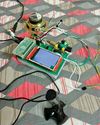
Pi Zero Portable BILINGUAL TRANSLATOR
This system is designed as a bilingual translator, leveraging the gTTS library to support multiple Indian languages, including English (en), Bengali (bn), Gujarati (gu), Hindi (hi), Kannada (kn), Malayalam (ml), Marathi (mr), Tamil (ta), Telugu (te), and Urdu (ur).
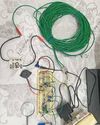
Op-Amp-Based VEHICLE THEFT DETECTOR
A simple, low-cost device can effectively alert homeowners or occupants if a parked vehicle is moved or tampered with.

loT SMART METER With Dashboard
Energy meters in homes track electricity usage, enabling accurate billing by governments and providers.

Choose The Right Cloud Platform For Implementing loT PROTOCOLS
Working with loT protocols like MQTT, AMQP, and CoAP on cloud platforms is essential for developing scalable and efficient lol applications. The choice of the programming platform will depend on factors like project requirements, existing skills, and target devices. Leveraging the appropriate libraries and cloud services can enable seamless integration of lol devices with cloud-based applications.

Why TMR SENSORS Lead Next-Generation Design
TMR sensors are gaining traction in industries needing precision and power efficiency. What makes them the go-to choice for modern designs?
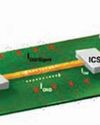
DESIGNING PCBs For EMI Management
Electromagnetic interference can derail your PCB’s performance. EMI management is not just a technical necessity but a hallmark of exceptional PCB design.

CUTTING COSTS, NOT CORNERS: Building Large Scale Applications With Open Source Software
Here are some strategies and best practices for leveraging open source to create enterprise-grade web and mobile applications without sacrificing quality or functionality.
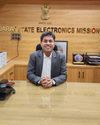
"We Are One Of India's Very Few State Bodies To Manage The Entire Lifecycle Of The Electronics EcosystemFrom Approvals To Subsidies."
What is Gujarat State Electronics Mission GSEM), and how is it attracting major investments in electronics manufacturing, particularly semiconductor manufacturing, to Gujarat? To delve deeper, Electronics For You’s Nijhum Rudra spoke with Manish Gurwani, the head of GSEM. Here is what he revealed...